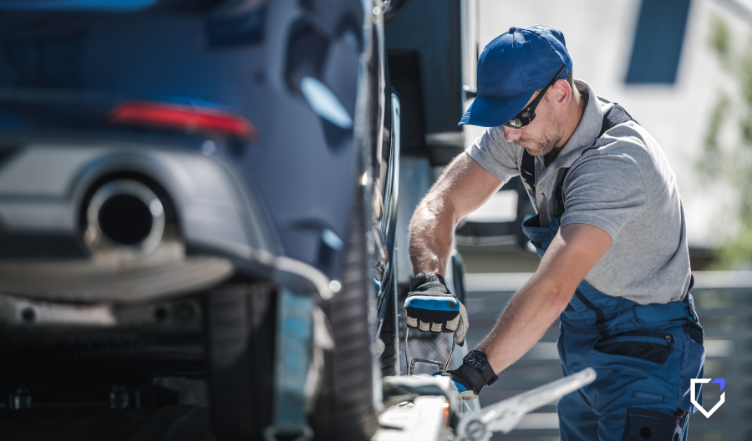The busiest season of the year is here for tow truck drivers! With over 70 percent of the nation’s roads located in snowy regions, winter weather leads to an increased need for towing as motorists deal with winter storms, snow and ice.
Dangerous road conditions and heightened demand only add to the potential hazards these essential first responders face on a daily basis. In addition to the risks that come with navigating roads and working on the sides of busy highways, the physical aspect of the job is taxing too. Operating heavy machinery to load and unload vehicles, driving for long hours, and getting in and out of the cab can lead to musculoskeletal and repetitive stress injuries, especially strains and sprains.
According to a study by the National Institute for Occupational Safety and Health, based on data from 2011 to 2016:
- The annual nonfatal injury rate among motor vehicle towing workers per 10,000 full-time employees was more than double the rate for all U.S. private industries (204 vs 98).
- 6,400 nonfatal injuries and illnesses resulted in missed workdays.
- 32% of all nonfatal injuries were due to overexertion and bodily reaction from bending, kneeling and crawling.
- Most injuries involved sprains, strains and tears.
How Wearable Tech Can Improve Tow Truck Worker Safety
In an industry prone to worker accidents and injury, putting tow truck driver safety first pays for everyone, from the drivers themselves to the towing companies that employ them. Preventing strain and sprain injuries before they happen helps all parties avoid lost work time and productivity, which is critical this time of year. Plus, it helps employers save on workers’ compensation claims costs and insurance premiums.
Wearable safety tech can help tow truck workers move more safely on the job, significantly reducing their risk of injury. When outfitted with a wearable device that alerts them of high-risk movements – such as improper bending, twisting and overreaching – workers increase their awareness of these risky behaviors. This continuous coaching helps them to create safer habits and perform less high-risk movements, which leads to fewer work-related injuries.
Wearable tech can reduce injury frequency by 50-60% and lost work days by 72%.
Perr&Knight actuarial analysis, 2021
By collecting high-risk posture data for an entire workforce, wearables also help employers to be informed about workers and timeframes that are most at risk. These insights can lead to focused efforts, such as additional safety training, that further reduce risk and help control loss.
For example, we introduced a new jump detection feature set for the Kinetic Reflex wearable platform last spring, providing insights into the frequency and timing of high-risk jumps. With this feature, employers of tow truck drivers can discover high-risk employees, and provide specific coaching and support around how to properly exit a truck to avoid potentially dangerous jumps.
Reduced worker injury rates reduce a policyholder’s overall workers’ comp burden. In environments where high strain and sprain injury rates are present, like in the towing industry, wearables can reduce claims costs by 50%. As fewer claims are reported, E-mod scores improve and premium rates go down.
Innovative workers’ compensation policies that include wearable safety tech at no cost are making this cutting-edge tech increasingly accessible to companies of all sizes, allowing more employers to take a proactive approach to workplace safety and workers’ comp. The benefits include a safer, more productive workforce and lower costs for employers.
Kinetic Insurance, in partnership with Nationwide, is pioneering a technology-driven approach to worker safety that benefits insurance carriers, brokers, and policyholders. Our workers’ compensation offerings lower costs by equipping workers with wearable technology that is proven to reduce injuries by as much as 60% and lost work days by 72%.
Want to learn more? Reach out to us at info@kinetic-insurance.com.
